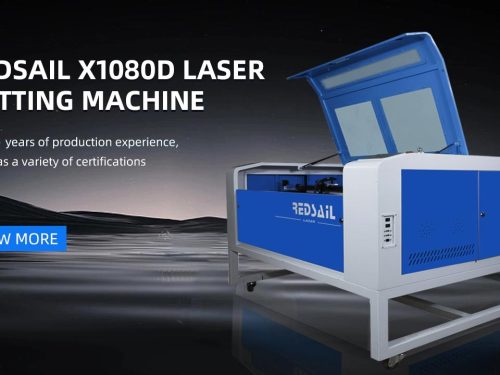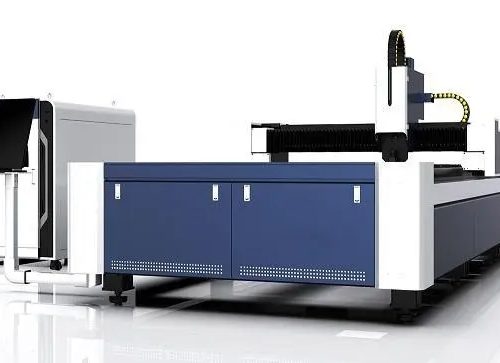
Laser cutting is the earliest and most widely used application technology in the field of laser processing, accounting for more than 70% of the entire laser processing field. Laser cutting machines are widely used in machinery, automotive, aerospace, light industry, textile, food and medical industries. The traditional laser cutting is mainly planar cutting. With the development of laser cutting technology, the machining of three-dimensional workpiece with free form surfaces has gradually become possible. Since the world’s first five-axis CO2 laser cutting machine was introduced in Prima Company in 1979, three-dimensional laser cutting machines have gained many popularity due to their advantages such as strong flexibility, high accuracy, low demand for tooling equipment, and short production preparation time. Currently, they are widely used in the production of three-dimensional workpiece processing requirements in the fields of automotive, mechanical manufacturing, aerospace, and other fields.
Development Status and Trend Analysis of 3D Laser Cutting Machine
1、 Types of three-dimensional laser cutting machines
In order to ensure processing quality and efficiently utilize laser beam energy, during three-dimensional laser cutting, the laser optical axis of the cutting head must always be perpendicular to the surface of the workpiece being cut while moving along a preset spatial trajectory. Therefore, three-dimensional laser cutting machines typically need to have at least five axes, namely, three linear motion axes (X, y, and z axes) and two rotation axes (two of the A’B’C axes). Currently, three-dimensional laser cutting machines in the commercial market have two basic structures: gantry type and robot type. The former is usually provided by a bed or workbench to provide X, y, and z axis linear motion, while the cutting head provides the other two axis rotational (or oscillating) motion; The latter uses optical fiber transmission (or articulated arms with mirrors) to connect to the robot to achieve three-dimensional laser cutting.
High power lasers are key accessories for laser cutting equipment. According to the types of lasers used, three-dimensional laser cutting machines are generally divided into three categories: fiber laser cutting machines, CO2 laser cutting machines, and YAG laser cutting machines. Currently, three-dimensional laser cutting machines in the commercial market are mainly fiber laser cutting machines and C02 laser cutting machines.
2、 Research status at home and abroad
1. 3D fiber laser cutting machine
Compared to CO2 laser cutting and YAG laser cutting, fiber laser cutting has advantages in cutting efficiency, photoelectric energy conversion efficiency, optical path structure, maintenance cost, cutting accuracy, etc_ In recent years, optical fiber laser cutting machines have developed rapidly, gradually replacing traditional CO2 laser cutting machines and becoming the new mainstream of the market. Currently, well-known foreign manufacturers of three-dimensional fiber laser cutting machines mainly include Trumpf Company in Germany, PrimaPower Company in Italy, PREISER Company in the United States, as well as Komatsu Company, NTC Company, Kochi Company ‘Mitsubishi Company, AMADA Company, and MAZAK Company in Japan.
China’s industrial laser started relatively late, and the research on commercialized laser cutting machine technology lags far behind that of developed countries. With the national inclusion of laser processing technology in key scientific and technological research projects, a boom has arisen in China, with more and more enterprises and research institutes carrying out research on related technologies. At present, many enterprises in China, such as Han’s Laser, Huagong Laser, Chutian Laser, Baichao Dineng, Jinan Jinweike, and Leiming Laser, have launched 3D fiber laser cutting machines.
Currently, in terms of main technical indicators, domestic 3D fiber laser cutting machine products are not significantly different from foreign mainstream products.
2. 3D CO2 laser cutting machine
C02 laser cutting machines are currently commonly used for the processing of stainless steel with a thickness of no more than 12 mm and non-metallic materials with a thickness of no more than 25 mm. They are widely used in the cutting and processing of automotive interior and exterior decorative parts and non-metallic parts in other industries. Currently, the main foreign manufacturers of C02 laser cutting machines include Trumpf Company in Germany, PrimaPower Company in Italy, Komatsu Company in Japan, NTC Company, etc.
Currently, domestic CO2 laser cutting is mainly applied to two-dimensional cutting machine products, and there is currently no product-based three-dimensional CO2 laser cutting machine product.
3、 Development trend
1. High power. Increasing the power of the laser can improve processing capacity and efficiency, and reduce processing costs. As the cost of lasers has decreased, the power of mainstream 3D cutting machine products has increased from 2kW and 3kW a few years ago to 4kW and 6kW. Now, there are also 10000 watt grade products, and it is believed that in the next few years, 10000 watt grade products will become the mainstream in the market.
2. High speed and high accuracy. Improving positioning speed and accuracy can help improve machine tool processing efficiency, meet the performance requirements of construction machinery and other high value-added products, and enhance product competitiveness. Currently, the positioning speed of mainstream products of cutting machines is 100 m/min, while the positioning speed of high-speed cutting machines can reach up to 280 m/min.
3. Intelligent. Automation and intelligence of operations are the requirements of Industry 4.0 and intelligent manufacturing. More and more enterprises are paying attention to the intellectualization of machine tools, such as open systems, automatic nesting, self fault diagnosis, intelligent management of process data, and remote control.
4. Diversified functions. Expanding the processing range of a machine tool can increase the flexibility and adaptability of the machine tool, thereby enhancing the competitiveness of the product. Many advanced 3D cutting machine products abroad have a wide range of processes to meet the needs of multiple types of welding and cutting processing.
In the context of the transformation of China’s industrial field from traditional processing to high-end manufacturing, the laser cutting industry will maintain a high-speed development trend. In the future, three-dimensional laser cutting machines will develop towards high-power, high-speed, high-precision, intelligent, and functional diversification. At present, compared with developed countries such as Germany, Japan, and Italy, China has a significant gap in terms of 3D laser cutting machine products, core components such as laser cutting heads, high-power lasers, and key technical fields such as laser cutting mechanism research, high-performance numerical control system development, which requires continuous in-depth research by scientific and technological personnel.










